July Agronomy Update
Posted on July 30, 2020

Parts of the Midwest have been experiencing hotter than normal temperatures and humidity throughout the day. These conditions are coming together and forming the perfect storm. The easiest way to describe the potential for disease in corn is to take a look at the disease triangle. The disease triangle consists of three factors: host, organism, and environment, Figure 1. If one of these factors is not present, the potential for disease will fall to 0. If all three factors in a field are present, there will be a good chance disease will occur and limit yield potential at harvest.

Figure 1: Disease Triangle
There are a few diseases likely to occur in corn around this time of the growing season. Northern corn leaf blight, Figure 2, presents as a cigar shaped lesion on the corn leaf. Gray leaf spot, Figure 3, appears as rectangular lesions on the corn leaf. Gray leaf spot and northern corn leaf blight can be devastating to the yield. Personally, I have seen yield reduction as much as 80 bushel per acre as a result of these diseases. Hybrid resistance or susceptibility play a significant role in whether yield is impacted by the presence of these diseases. Yield potential can be protected on all hybrids by applying a fungicide at the VT growth stage in corn.

Figure 2: This picture of northern leaf blight was taken in 2019 near Kokomo, Indiana.

Figure 3: This picture was taken near Walton, Indiana, on 7/16/20. This shows grey leaf spot starting to develop on the ear leaf.
Tar spot on corn, caused by the fungus Phyllachora maydis, was first confirmed in the United States in 2015. It has its origins in Mexico and Central America where the disease is prevalent. In these areas, cool, humid conditions with long periods of leaf wetness are favorable for infection and disease development. This “new” disease presents itself on the top side of the corn leaf, and plants affected with tar spot will have raised black and circular spots, Figure 4. The fields infected with tar spot last year experienced severe stalk degradation and fell flat on the ground, making harvest difficult.

Figure 4: Multiple tar spot stroma found in the lower canopy. (Photo Credit: Tiffanna Ross, Purdue)
Frogeye leaf spot, Figure 5, can be devastating to a soybean crop. This disease is caused by the fungus Cercospora sonjina and presents as circular to angular spots, up to 1/4-inch in diameter that develop on the leaves. Spots have tan centers with a reddish brown or purple outer ring. This disease can cause premature defoliation. The fungus survives in the soybean residue or infected seeds. Warm, humid weather favors the spread of the disease. Younger leaves are more susceptible, so as each leaf layer develops, lesions may be heavier on some leaves than others.
The application of a fungicide to stop the fungal assault on corn and soybean tissue does not mean the tissue will grow back and alleviate the plant’s stress. The application of a foliar fertilizer during the VT growth stage for corn and R3 growth stage for soybeans can mediate the stress caused by disease. Foliar fertilizer applications late in the season need to be applied based on crop need.

Figure 5: Frogeye leaf spot lesions will spread until there is no green leaf material left. This picture was taken around North Manchester, Indiana, in 2015
Once the corn plant hits the reproductive stage, or VT, the need for nitrogen, sulfur and boron skyrocket. Boron and sulfur are immobile in the plant, making a foliar fertilizer application more efficient. Applying a foliar fertilizer will limit the loss of nutrients to the environment because it is applied directly on the leaf tissue. An application of 1 gal/ac of Over Pass® CF and 1 gal/ac of Super 25B® to corn at VT will ensure the right nutrients are applied at the right time, Figure 6.
Figure 6: This trial shows an increase in yield with 1 gal/ac of Over Pass CF applied at V5 and VT.
The sweet spot for applying a foliar fertilizer on soybeans is the R3 growth stage. This is when the developing pod is 1/4-inch long on one of the four uppermost nodes of the soybean plant. The soybean plant is using an incredible amount of potassium, manganese, and energy at this point to fill out its pods. To meet these needs, apply 1 gal/ac of Over Pass SF and ½ gal/ac Sweet ‘N Eezy®, Figure 7. Over Pass SF will provide potassium and manganese. The proprietary blend of sugar in Sweet ‘N Eezy will provide the necessary energy boost to finish the crop out strong.
Figure 7: This trial shows a 9 bu/ac increase with a 1 gal/ac application of Over Pass SF at R3.
In conclusion, this year’s environment is conducive for a major disease outbreak in corn. A fungicide application at the VT growth stage will help stop the disease pressure, minimizing yield loss. While going over the corn at this stage, piggybacking a late-season foliar product such as Over Pass CF for corn and Over Pass SF and Sweet ‘N Eezy for soybeans will pay dividends.
FOR MORE INFORMATION:
Please complete the form, and we’ll get you in touch with your Territory Manager from The Andersons.
©2020 The Andersons, Inc. All rights reserved. Over Pass CF, Super 25B, and Sweet 'N Eezy are registered trademarks of The Andersons, Inc.




